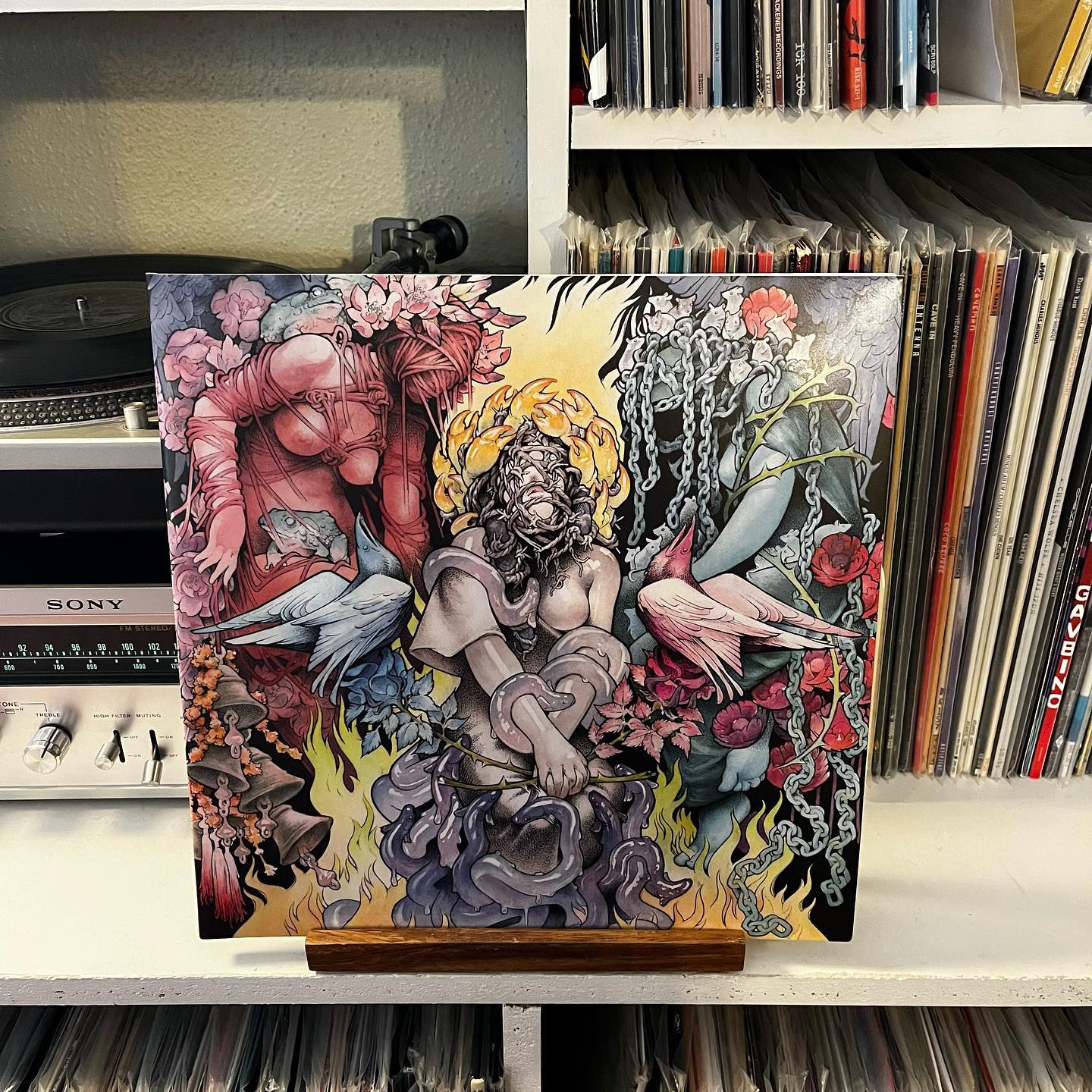
I’m a relative newcomer to the Baroness faithful. After falling in love with Purple it took me until Gold & Grey to consider diving deeper into their back catalog. Red Album and Yellow & Green were the first and last records I bought in 2020, and that long digestion process convinced me that they were one of the best metal bands going today, offering a confounding blend of sludge metal, progressive rock, psychedelic, folk, and good ol’ fashioned rock ‘n’ roll that is above reproach. The phrase I kept using in those reviews were “they can do no wrong.”
I’ll admit, Stone is the biggest challenge to that assertion that they’ve offered. My first few listens—which I undertook while distracted—were a little underwhelming. I added them to my year end list out of necessity—I only had twenty-three and needed two more to round it out. Whether that was a self fulfilling prophecy or not, I’m not sure. But what I do know is that I ordered it right after publishing that list, thinking, “how bad can it be? It’s friggin’ Baroness.”
And upon giving it a few close listens, I stand by that claim. Stone offers up plenty of their trademark brand of anthemic heavy metal while also stretching further into new sounds.
First things first, this is a record that needs to be taken in all at once. While Baroness has always managed to balance their ambition with their accessibility, this might be their most experimental and eclectic. The first five tracks comprise one suite, bookended by “Embers” and “The Dirge,” two Appalachian tinged ballads that are light on the dynamics and heavy on the harmony. The lead single “Last Word” is as Classic Baroness™ a track as you can get, before it crashes into the next single “Beneath the Rose,” wherein vocalist/guitarist/cover artist John Dyer Baizley employs a spoken word delivery that is likely to make or break the album for many people. That style continues through “The Choir,” which leans heavy on their psychedelic tendencies and has elements of Krautrock. Think Iron Maiden covering Neu! and you might get close.
After this suite, the songs are a bit more independent, and offer exactly what we come to Baroness for. The obvious standout is the near-eight-minute “Magnolia,” which starts off in a folksy psychedelic hush before exploding into a swaggering riffage that ends with the melody of the opening section played with as much power as they can coax out of it. But it’s not like the rest of the album suffers in its shadow. Tracks like the pummeling “Shine” or the emotionally powerful “Under the Wheel” recall the best moments of Yellow & Green and Red Album while still sounding fresh. “Bloom” then closes the record with an expanded variation “Embers,” resisting the urge to explode into guitar onslaught like your typical Baroness ballad, and it’s better for it.
And while this is the second studio album to feature Gina Gleason, she feels like an indelible part of the band here. Her voice is as central to this record as her guitar, offering a harmony to Baizley’s barking baritone nearly every time he sings. It almost feels as if her harmonies have brought out a softness in his own voice as well, as there are a number of songs where he sings in a far smoother clean register that would sound unrecognizable to anyone coming to this disc from Red.
All that said, I understand why this record is as divisive as it is. As ambitious as Baroness’ albums have always been, previous albums have been a bit easier to take in smaller bites. For its vastness of scope, Yellow & Green didn’t require a single listening session to digest (the band even recommended taking a break between discs!). And while Stone’s singles are certainly up to par with their best rockers, small dips into the album aren’t nearly as effective as letting it soak. That said, given that this is Baroness’ sixth studio album, the fact that they’re still offering up music this inventive and powerful says an awful lot for their staying power.